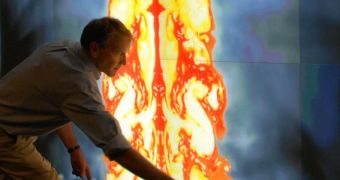When it comes to asteroids size really doesn't mater, as they can hit Earth's atmosphere with forces similar to those of bigger cousins. This information is even more baffling when you take into consideration that in our effort to detect the biggest threats posed by asteroids to Earth we have been unable to develop a program that would monitor the bodies with diameters smaller that 140 meters. Furthermore, statistical calculations show that there are possibly more smaller asteroids in the close proximity of our planet than large ones, which could intersect Earth's orbit and cause havoc in some regions.
For example, the asteroid that is believed to have caused the event that took place in Siberia, at Tunguska on the 30th of June 1908, could have been greatly underestimated and might have had less than half the size previously predicted. Such an object traveling through the atmosphere at more than 40 times the speed of sound heats up to extreme temperatures forming a so-called fireball of superheated gas around it, which will eventually determine the asteroid to explode in multiple fragments at a relatively high altitude in the atmosphere. A similar air burst might have taken place at Tunguska, at an altitude of approximately 5 kilometers, blasting an air shock wave equivalent to about 20 megatonnes of TNT, which leveled an area of 200 square kilometers of forest. Imagine such an event taking place in a populated area or a city.
Previous computer models could have overestimated the size of the projectile hitting Earth's atmosphere mostly because of the fact that scientists estimated the energy released during the explosion as being close to the nuclear explosion events. However, they forgot about a key aspect of asteroids: the momentum of the object, which can greatly increase the energy of the explosion.
Furthermore, computer simulations conducted recently by Mark Boslough from the Nuclear Security Administration Laboratory reveal that though an asteroid around 50 meters in diameter could have been responsible for the Tunguska event, the actual damage of the surrounding area could have been much larger than previously thought.
Mark Boslough became famous more than a decade ago when he predicted that the broken fragments of the comet Shoemaker-Levy 9 which was going to hit Jupiter, would produce fireballs visible from the surface of our planet. He argues that the deflection of such objects coming towards Earth would need special care regarding the explosion method of the asteroid that could result in multiple fragments speeding through the atmosphere, which could result in a greater damage than the actual body as a whole.
It is estimated that an asteroid the size of the one that exploded over Tunguska in 1908 would cause more than a million casualties in case it hits a heavily populated area.

 14 DAY TRIAL //
14 DAY TRIAL //